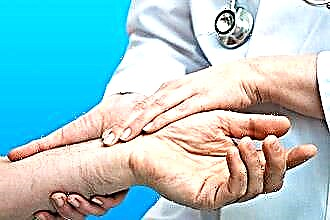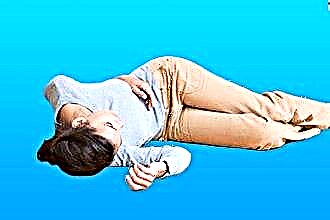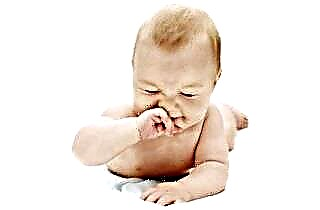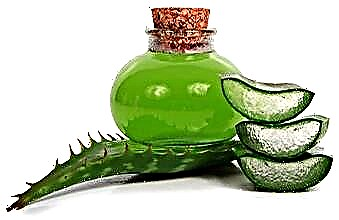Any changes in the body, including fluctuations in blood pressure (BP) and pulse, can be transient conditions or occur against the background of certain diseases. If in the first case they are most often asymptomatic, then in the second they are fraught with unpleasant consequences and require immediate medical attention.
For what reason can a person have a rare pulse and low blood pressure?
Hypotension (a decrease in blood pressure less than 90/60 mm Hg) is most often caused by either a decrease in the tone of the vascular walls, or a decrease in the amount of circulating blood. The addition of bradycardia to this condition (pulse less than 60 beats per minute) is typical for population groups:
 People who are physically active. The heart obeys the laws of physics, like everything else around, therefore, when a large amount of blood is released at once, the pulse and pressure increase. As a result of prolonged exertion, a condition such as a bovine heart (an increase in the size of an organ) can occur, which is very typical for professional athletes. A pathological change in its shape can be fatal, because of this, people who have been diligently involved in sports cannot afford to abruptly quit training, since the vascular system has already adapted to heavy loads.
People who are physically active. The heart obeys the laws of physics, like everything else around, therefore, when a large amount of blood is released at once, the pulse and pressure increase. As a result of prolonged exertion, a condition such as a bovine heart (an increase in the size of an organ) can occur, which is very typical for professional athletes. A pathological change in its shape can be fatal, because of this, people who have been diligently involved in sports cannot afford to abruptly quit training, since the vascular system has already adapted to heavy loads.- Elderly patients. Over the years, our body weakens, so there may be a decrease in the release of blood from the myocardium due to heart failure.
- Those who have suffered hypothermia. Low temperatures adapt our body to reduced oxygen consumption, so the rhythm slows down and the pulse rate decreases. But most often this condition is temporary and passes with the warming of the environment.
- Pregnant women. Pregnancy is a restructuring of the body and chronic stress for it. An enlarged fetus or an unsuccessful sleeping position can lead to a deterioration in well-being, for example, when the inferior vena cava (which is located on the right side of the chest) is compressed, pressure and pulse decrease. Therefore, lying on the right side is not recommended in late pregnancy. In addition, bradycardia with hypotension can be associated with oxygen starvation of the mother, which negatively affects the development of the fetus.
- Patients with cardiovascular diseases. Low blood pressure and a rare (low) heartbeat may indicate certain pathologies:
- congenital heart defects in children;
- atherosclerosis, inflammation (myocarditis), ischemia or postinfarction cardiosclerosis in adults.
In patients with hypertension after coronary artery bypass grafting (CABG), transient hypotension is possible, which may affect the management of the postoperative period.
- Patients with poisoning. A side effect of some drugs or chemicals is precisely a decrease in blood pressure and heart rate. Particular attention should be paid to potassium cyanide, phosphates, beta-blockers and other antihypertensive pills, as well as intoxication with viral hepatitis, sepsis or uremia.
- People with impaired thyroid function. Hypothyroidism (decreased organ function) leads to hypotension and bradycardia, which distinguishes it from hyperthyroidism, which is characterized by tachycardia. To diagnose this disease, it is necessary to monitor the level of thyroid hormones.
First aid and further actions of a patient with bradycardia and hypotension
The algorithm of action depends on the frequency of occurrence of symptoms, their intensity and the cause of low blood pressure and frequent low pulse. Typical clinical picture: headache, dizziness, drowsiness in the middle of the day, loss of consciousness, nausea; vomiting, cold sweat, shortness of breath, edema may occur.
 Treatment primarily depends on the severity of the manifestations. This can be found out by going to the doctor's appointment. The range of possible diagnostic procedures includes taking anamnesis, objective examination (measurement of pulsation, pressure, assessment of the state of the cardiovascular system), general tests (anemia is possible, which is manifested by a lack of hemoglobin and erythrocytes), ECG, Holter monitoring, chest X-ray and additional research dependent on concomitant diseases.
Treatment primarily depends on the severity of the manifestations. This can be found out by going to the doctor's appointment. The range of possible diagnostic procedures includes taking anamnesis, objective examination (measurement of pulsation, pressure, assessment of the state of the cardiovascular system), general tests (anemia is possible, which is manifested by a lack of hemoglobin and erythrocytes), ECG, Holter monitoring, chest X-ray and additional research dependent on concomitant diseases.
If this condition does not cause any particular discomfort, you can take a cup of strong green tea with low pressure and low pulse. This increases blood pressure and tones the blood vessels. A variety of tinctures have a positive effect: ginseng, belladonna, eleutherococcus.
In chronic course, medications are used: Citramon, Zelenin's tincture.
There is a special conduction system in the heart that ensures the excitability and automatism of the heart. The rates of contractions above 60 times per minute are provided by the sinus node (which normally plays the role of a pacemaker of the 1st order). With its weakening, the function of the pacemaker is performed by the underlying structures, which contributes to bradycardia. With this pathology, surgical intervention and the installation of a pacemaker, which provides the heart rate of the required level, is adequate.
Do not forget to control the pulse and pressure during an attack, since a decrease in the heart rate (HR) below 40 is fraught with cardiac arrest, therefore, indicators less than 50 or resistance to home treatment are indications for calling an ambulance.
Critical conditions that may be accompanied by hypotension and bradycardia:
- Pulmonary embolism (blockage of a vessel by a thrombus, resulting in acute respiratory failure). In such a case, it is necessary to carry out anticoagulant therapy with heparin or its analogs, thrombolytic therapy (streptokinase, alteplase) and treatment of hemodynamic and respiratory disorders. In parallel, the ability of the blood to clot is recorded. To verify the diagnosis, X-rays are taken and the D-dimer is measured.
 Loss of consciousness and collapse (a critical decrease in blood pressure, which requires immediate medical attention and can lead to failure of internal organs). In this case, it all depends on the reason that provoked the attack. First aid is to place the person in a prone position (if not already done) and raise their legs to increase blood flow to the head. Further, drugs such as caffeine-sodium benzoate, mezaton, adrenaline can be administered. In case of hemorrhagic collapse, it is necessary to stop bleeding and start introducing blood substitutes, and in case of an infectious one, infusion therapy, detoxification and elimination of the pathogen are carried out;
Loss of consciousness and collapse (a critical decrease in blood pressure, which requires immediate medical attention and can lead to failure of internal organs). In this case, it all depends on the reason that provoked the attack. First aid is to place the person in a prone position (if not already done) and raise their legs to increase blood flow to the head. Further, drugs such as caffeine-sodium benzoate, mezaton, adrenaline can be administered. In case of hemorrhagic collapse, it is necessary to stop bleeding and start introducing blood substitutes, and in case of an infectious one, infusion therapy, detoxification and elimination of the pathogen are carried out;- Severe allergic reactions (eg, Quincke's edema). These conditions are stopped by adrenaline or glucocorticoids, depending on the etiology;
- Condition during anesthesia. Hypotension and bradycardia are common side effects of spinal anesthesia. The main effects are reduced cardiac preload, which is associated with bradycardia. Here it is necessary to reduce the depth of anesthesia, to replenish the volume of circulating blood. Physicians sometimes resort to the use of vasopressors, atropine and antiarrhythmics - heavy cardiac artillery;
- Myocardial infarction. This pathology requires urgent medical attention. During an attack, there is typical chest pain radiating to the left side of the body.The symptom does not go away and does not stop with nitroglycerin, the person feels anxiety and fear of death.
Further tactics are to normalize the daily routine, sleep and rest. Eliminate stress and overload, and adequate physical activity, on the contrary, will help improve the condition. You should eat often, in small portions, drink a sufficient amount of fluids. It is recommended to use seaweed, seafood, nuts. A dairy-plant diet will be helpful. The patient should limit the consumption of baked goods and fatty foods.
Conclusions
A weak pulse and low blood pressure is a fairly popular combination of symptoms, which can be either a temporary condition or a sign of a pathological process. For people prone to these conditions, it is recommended to conduct examinations to identify a possible cause and, possibly, prescribe appropriate treatment.

 People who are physically active. The heart obeys the laws of physics, like everything else around, therefore, when a large amount of blood is released at once, the pulse and pressure increase. As a result of prolonged exertion, a condition such as a bovine heart (an increase in the size of an organ) can occur, which is very typical for professional athletes. A pathological change in its shape can be fatal, because of this, people who have been diligently involved in sports cannot afford to abruptly quit training, since the vascular system has already adapted to heavy loads.
People who are physically active. The heart obeys the laws of physics, like everything else around, therefore, when a large amount of blood is released at once, the pulse and pressure increase. As a result of prolonged exertion, a condition such as a bovine heart (an increase in the size of an organ) can occur, which is very typical for professional athletes. A pathological change in its shape can be fatal, because of this, people who have been diligently involved in sports cannot afford to abruptly quit training, since the vascular system has already adapted to heavy loads. Loss of consciousness and collapse (a critical decrease in blood pressure, which requires immediate medical attention and can lead to failure of internal organs). In this case, it all depends on the reason that provoked the attack. First aid is to place the person in a prone position (if not already done) and raise their legs to increase blood flow to the head. Further, drugs such as caffeine-sodium benzoate, mezaton, adrenaline can be administered. In case of hemorrhagic collapse, it is necessary to stop bleeding and start introducing blood substitutes, and in case of an infectious one, infusion therapy, detoxification and elimination of the pathogen are carried out;
Loss of consciousness and collapse (a critical decrease in blood pressure, which requires immediate medical attention and can lead to failure of internal organs). In this case, it all depends on the reason that provoked the attack. First aid is to place the person in a prone position (if not already done) and raise their legs to increase blood flow to the head. Further, drugs such as caffeine-sodium benzoate, mezaton, adrenaline can be administered. In case of hemorrhagic collapse, it is necessary to stop bleeding and start introducing blood substitutes, and in case of an infectious one, infusion therapy, detoxification and elimination of the pathogen are carried out;

